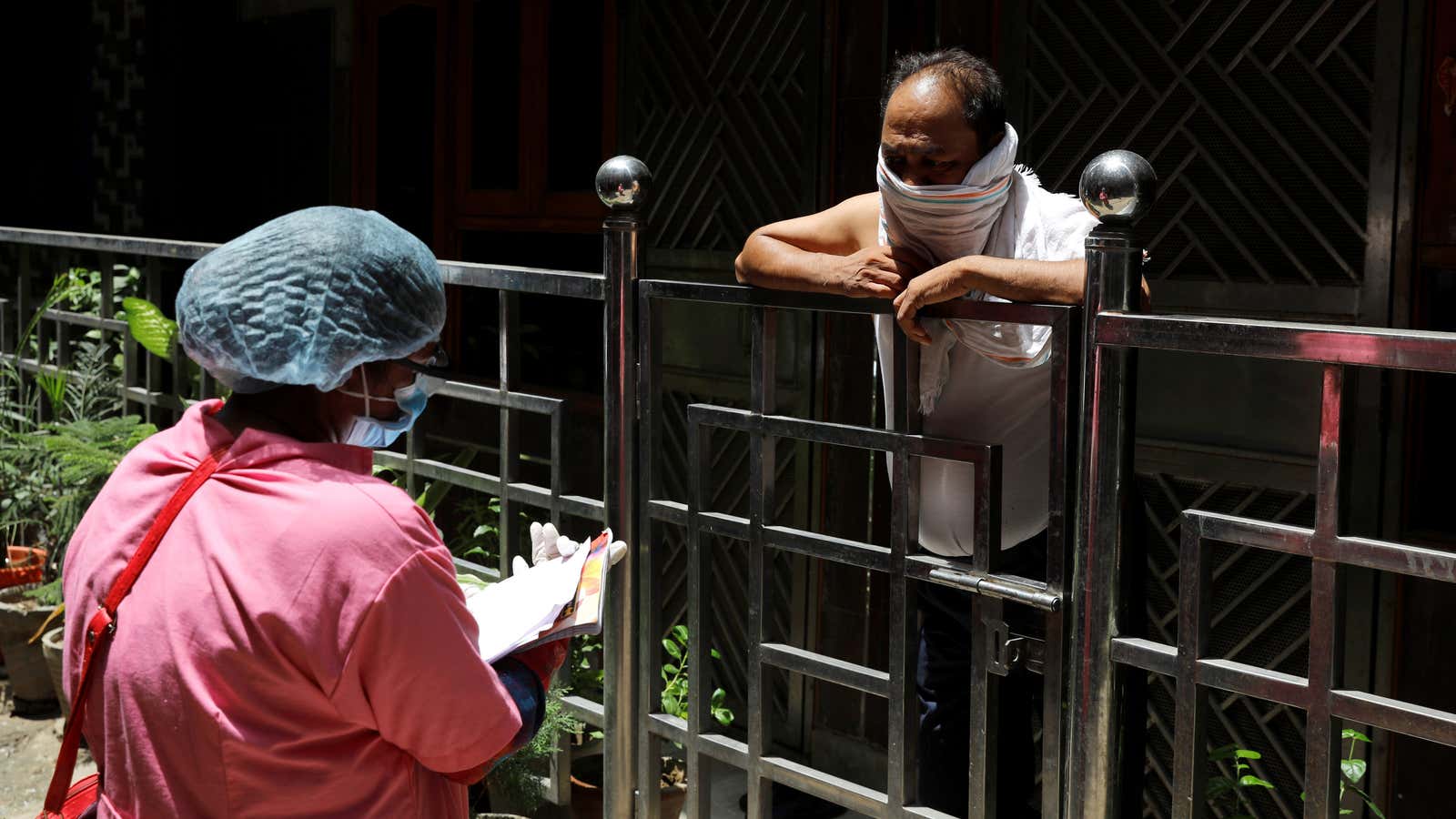India’s mass immunisation plan for Covid-19 hinges on some of the lowest-paid workers in its healthcare system.
The first phase of the vaccine rollout, which begins on Jan. 16 and will cover healthcare and frontline workers, and will largely depend on trained vaccinators and supervisors. But once the vaccine rollout is opened out for the entire population, local healthcare mechanisms, especially those that depend on auxiliary nurse midwives (ANMs), and accredited social health activists (or Asha workers) will be crucial.
Asha workers (an acronym that translates as “hope” in Hindi), along with the volunteer Anganwadi workers, and the more qualified ANMs, form the backbone of community healthcare in India. They are hired by the states and their salaries paid by funds from the central and state governments. Nearly all of them are women.
Such community health workers, in some states, will also receive the vaccine in the first phase.
These workers are responsible for maternal and child health, immunisations, and for creating awareness about contraception and maternal-fetal wellbeing. ANMs, for instance, are key for India’s universal immunisation programme. These workers are also essential for delivering government healthcare schemes to the remotest and poorest corners of India. Currently, India has approximately 900,000 Asha workers, who go door-to-door in their trademark pink attire, handing out supplements to women and offer counsel to expectant mothers.
For the work that Asha workers do, they are paid a monthly salary of Rs2,000-Rs4,500 ($27-$62) depending on which state they belong to. Over and above this salary, which is officially called an honorarium, Asha workers receive small incentives for completing specific “recurring” tasks. These include tasks like updating lists of children to be immunised in the village or district under the Asha worker. An Asha worker is aged between 25 and 45, literate, and a married/widowed/divorced woman from the local community. According to the selection criteria, she also must have studied up to class 10.
Each Asha worker is responsible for 1,000-2,500 people in her district, and four to five Asha workers together report to one ANM. These qualified auxiliary nurses, who supervise and mentor Asha workers, are paid up to Rs30,000 if they are employed full-time. Those on limited contracts earn between Rs8,000 andRs10,000 every month.
But over the past few years, and especially since the spread of the Covid-19 pandemic in India, community healthcare workers have been demanding better benefits and pay.
Asking for fair wages
Nearly 600,000 Asha workers sat on a two-day nationwide protest in August 2020, demanding better wages and health insurance against coronavirus.
Since India’s lockdowns and the spread of Covid-19, Asha workers said that they had been working 14 hours a day, documenting people’s quarantine schedules and tracking their districts for influenza-like symptoms.
In the eastern state of Bihar, Asha workers protested because their dues had not been cleared by the government for months. Elsewhere, Asha workers reported hostile attitudes from families from whom they had to collect data, including violence because of the fear of exposure to the virus.
Asha workers have no health insurance or government benefits because there is no full-time employment. This was also an aspect of the strike where, as healthcare workers, they demanded parity in such rights.
